I’ve had the Minolta Dynax 5 for a few months now and seeing that it was capable of a shutter speed up to 30 seconds I was intrigued by what could be achieved. So I loaded a roll of Kodak ColorPlus (I really love this film), picked up my tripod and made my way to central London.
For the first few shots my initial temptation was to stretch an exposure out to 30 seconds for a collection of combined light trails from traffic but in central London traffic rarely flows freely for 30 seconds, even at night. With the usual stop start of a busy road, a large part of a long exposure could be taken up exposing to an empty stretch of road or stationary traffic which would diminish the strength of whatever light trail I found. So I shortened the exposure time to between 3 seconds and 15 seconds at about f/11 or more. This made the light trails more pronounced.
There is a noticeable cast to these images. This is possibly due to the effects of reciprocity failure or perhaps the colours of the street lights, I don’t really know for sure and I like the effect so I’m not too fussed.
For this shot, to get all three traffic lights on at the same time I had to time the exposure to start just after the red man went out, and end just after the green traffic light went on.
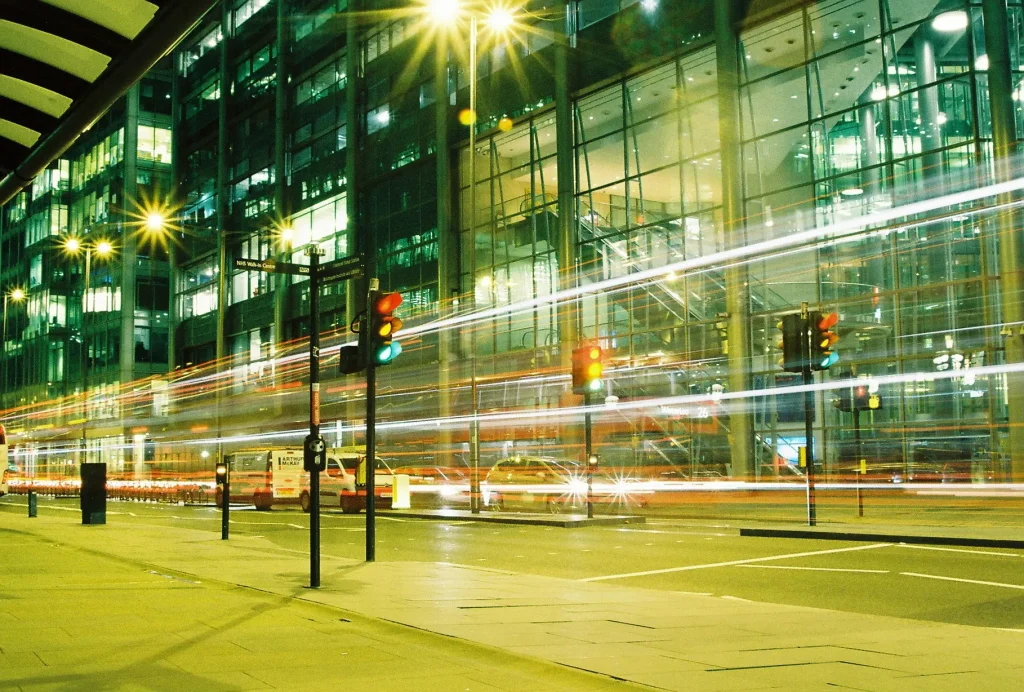
Having two busses pass at the same time was cool although I would like to have had a bit more definition from each one.
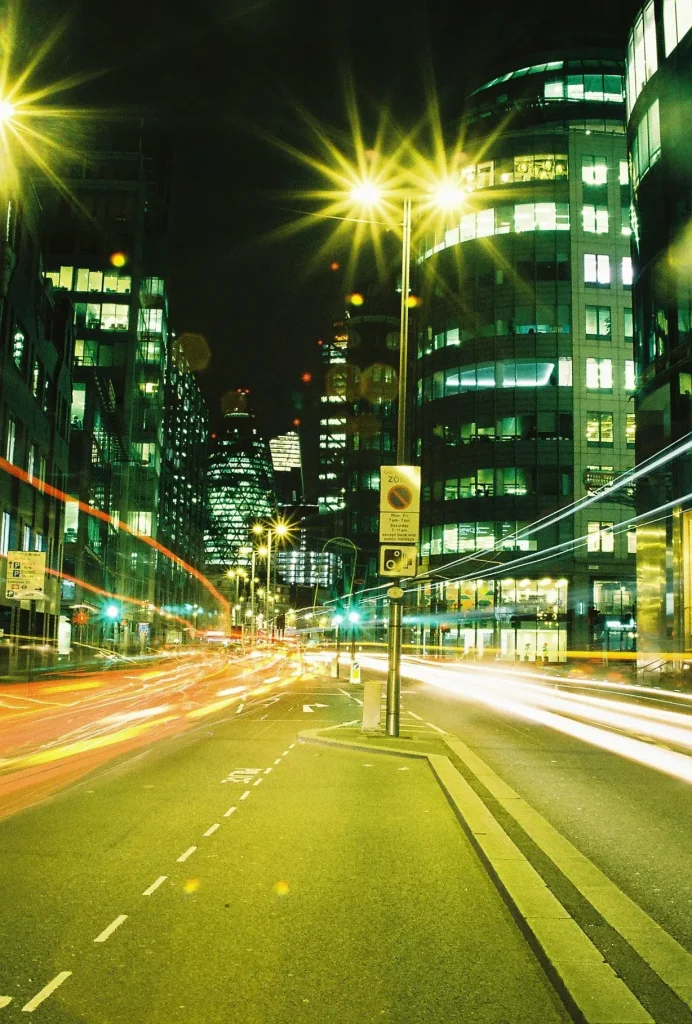
This next exposure was about 7 seconds long – I’m grateful the couple kept still long enough for me to set up and take the shot. Some people don’t like lens flare but in this shot I think it adds to the scene!
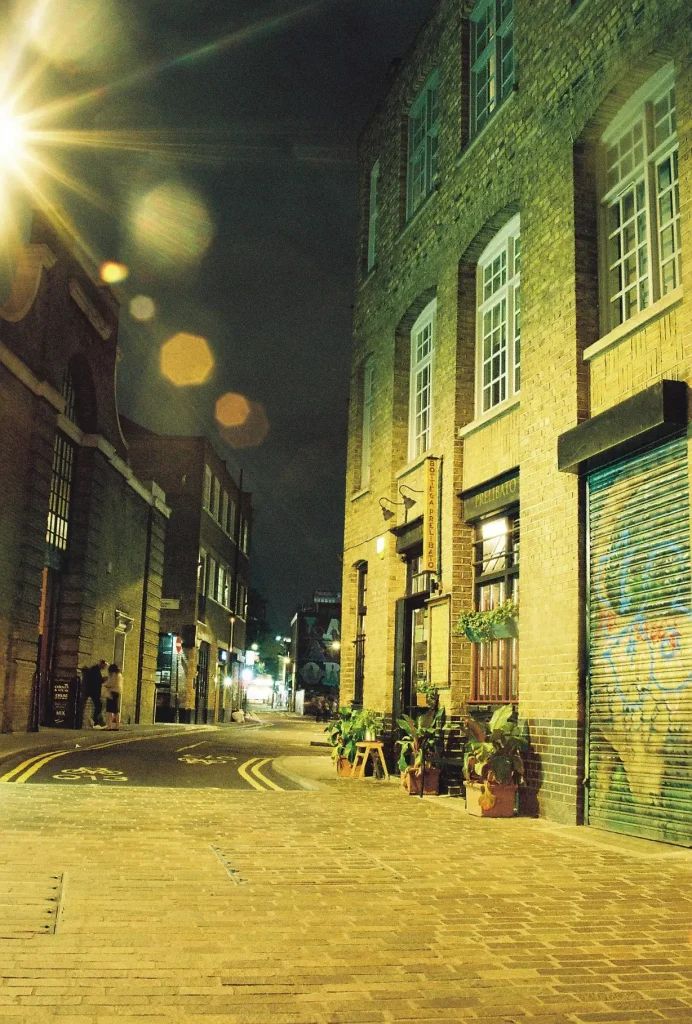
The lights here might be a bit overblown but I’m not unhappy with the effect! Again, some people have a problem with lens flare but each little hexagonal disk is individual and gives the shot a bit of character, I think.
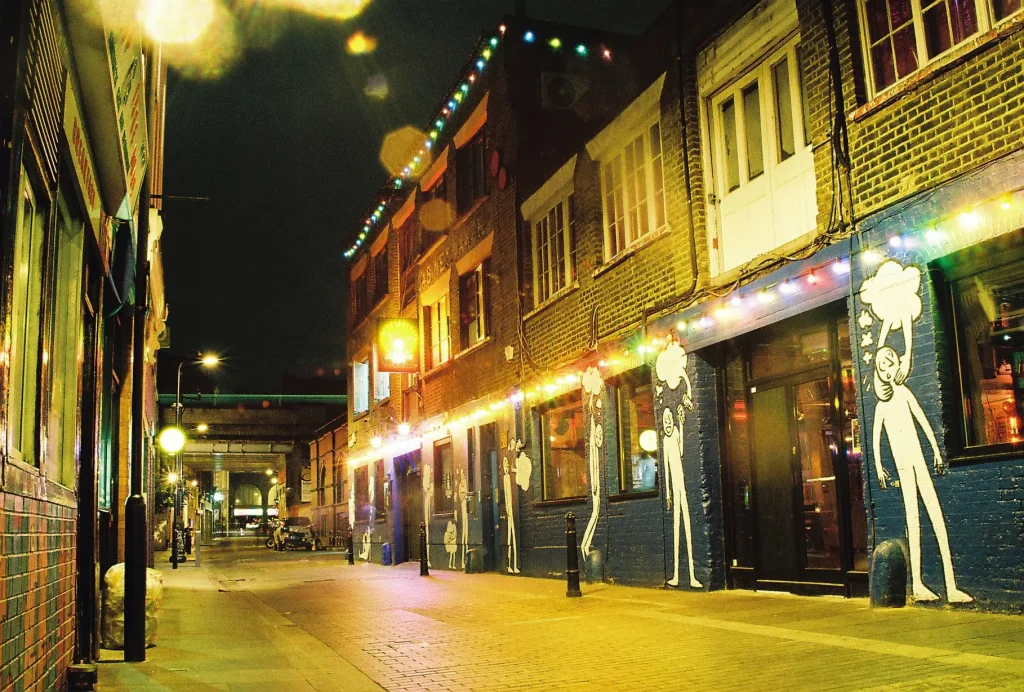
As the vehicle slowly passed, I wondered how much of it would actually be in the shot. Here I had to guess how long it would take the car to pass, allow enough time but try to avoid the frame being over-exposed. I had to think on my feet but I think it worked out O.K.
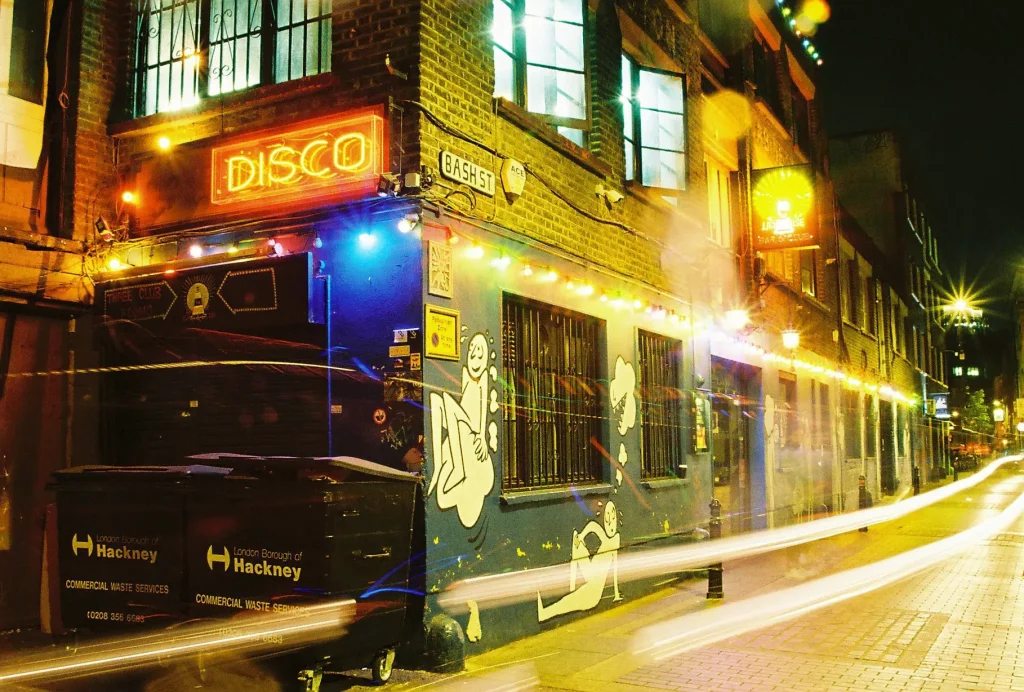
I may have over exposed in order to capture long enough light trails but I’m happy with the colours.
This is not a high end SLR but It was a lot of fun shooting long exposures without a filter.
You can find a curated collection of thought provoking analogue art and info about a range of workshops and photo walks on my Instagram – londoncameraproject
Share this post:
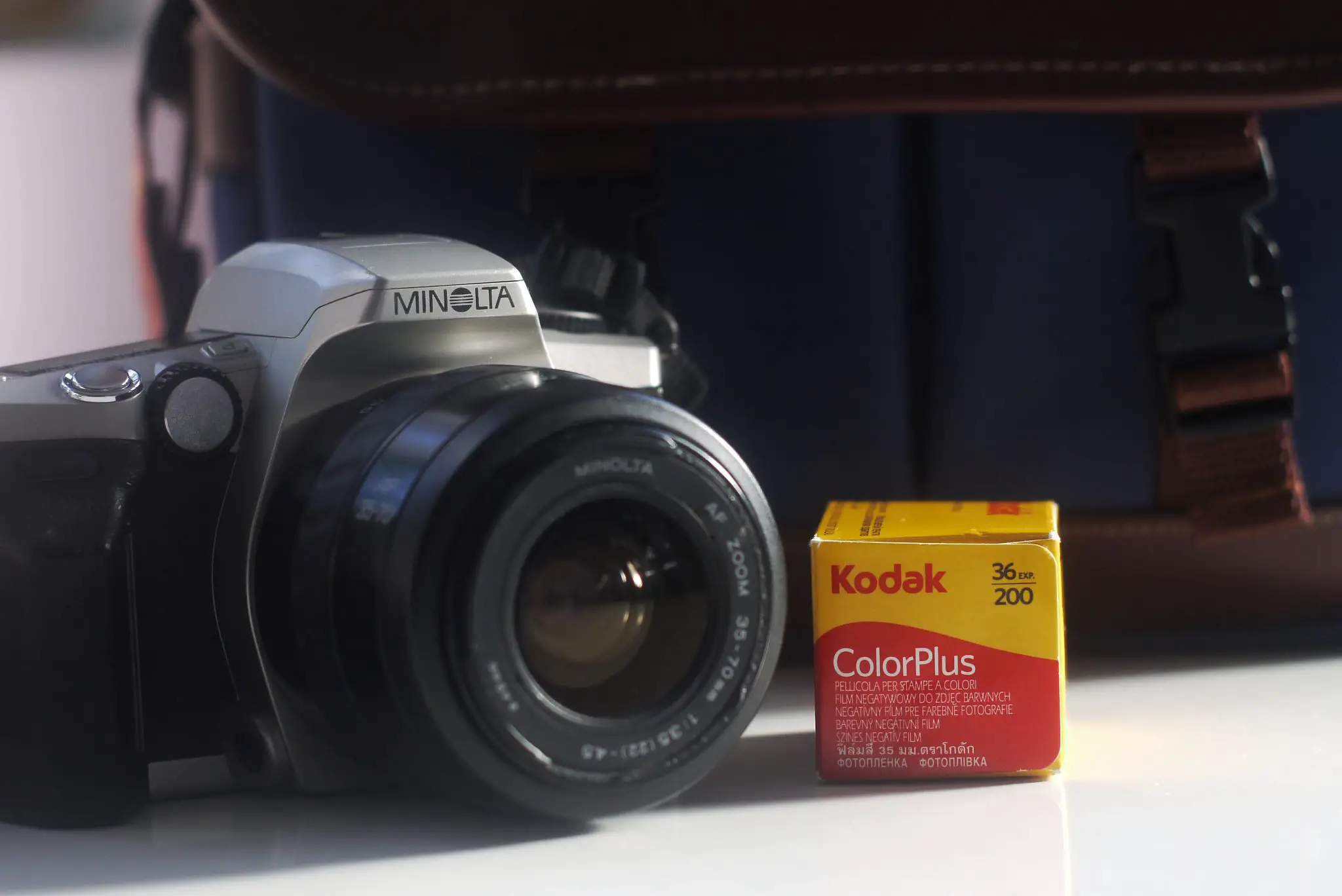








Comments
Paul Mulherin on Long exposures with the Minolta Dynax 5 and a roll of Kodak ColorPlus 200 – By Robert
Comment posted: 29/11/2018
Comment posted: 29/11/2018
Comment posted: 29/11/2018
calyth on Long exposures with the Minolta Dynax 5 and a roll of Kodak ColorPlus 200 – By Robert
Comment posted: 29/11/2018
It's probably a combination of color cast, plus the film being a daytime film. Street lamps are unlikely to be 5000K or so, so they'd all appear to be more orange. You could try getting your hands on some Cinestill 800T, which is Tungsten balanced and see if the orange cast is reduced.
Comment posted: 29/11/2018
Comment posted: 29/11/2018
Malcolm Myers on Long exposures with the Minolta Dynax 5 and a roll of Kodak ColorPlus 200 – By Robert
Comment posted: 30/11/2018
Comment posted: 30/11/2018
Dorian on Long exposures with the Minolta Dynax 5 and a roll of Kodak ColorPlus 200 – By Robert
Comment posted: 30/11/2018
A real shame, if you're in the market for a Minolta I'd recommend going for a slightly older model like a 700si or 600si instead.
Comment posted: 30/11/2018
Dorian on Long exposures with the Minolta Dynax 5 and a roll of Kodak ColorPlus 200 – By Robert
Comment posted: 30/11/2018
I’m really impressed with the 700si, it’s built like a tank. But obviously there’s a trade off there against the super light Dynax 5.
My 700si is in excellent condition although the top LCD is playing up. Thinking of trying to swap it. How hard can it be!!
Comment posted: 30/11/2018
Rob on Long exposures with the Minolta Dynax 5 and a roll of Kodak ColorPlus 200 – By Robert
Comment posted: 01/12/2018
Robert_ on Long exposures with the Minolta Dynax 5 and a roll of Kodak ColorPlus 200 – By Robert
Comment posted: 04/12/2018
Comment posted: 04/12/2018
Comment posted: 04/12/2018
Robert_ on Long exposures with the Minolta Dynax 5 and a roll of Kodak ColorPlus 200 – By Robert
Comment posted: 20/12/2018
Richard C Millard on Long exposures with the Minolta Dynax 5 and a roll of Kodak ColorPlus 200 – By Robert
Comment posted: 03/06/2019
I was wondering how you metered these, and whether you purposefully overexposed to counteract reciprocity failure. I'm using the same film but my camera doesn't have a light meter so I was using a friend's handheld light meter and overexposed by a stop to counteract reciprocity failure, but after seeing how great your shots turned out I'm not sure that I needed to!